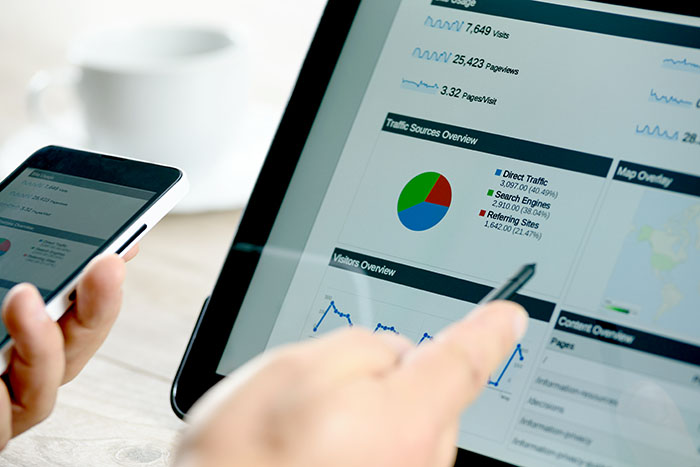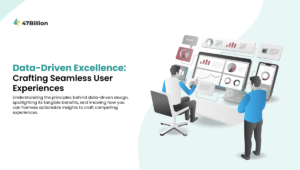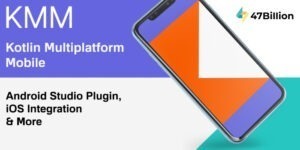Are you investing in advertising for your brand?
If so, you are probably aware of the potential benefits of Advertising spending. When paying for a digital or traditional campaign, you will expect instant traffic, which can turn into leads and sales. Analyzing your expenditure on marketing products is essential as monitoring budget distribution and ROI (Return of Investment) is crucial in analyzing the marketing spend. But how do you know if your AdTech initiatives are successful? How do you determine if your customers’ campaigns are successful? More importantly, how do your customers know that your AdTech product works for them? Analyzing your campaign performance is crucial to maintaining the overall health of your advertising spend.
What is Advertising Spend?
Advertising Spend is the amount of money spent on advertising campaigns. There are different ways to calculate the amount spent on Advertising spend. Some may take into account only the cost for Ads placement, or some may calculate the amount of placement, operational charges, and fees for agencies or calculate operational charges and expenses for agencies.
Latest Advertising spends Statistics
According to the latest data on global Advertising expenditures, the Advertising spend in 2020 reached 586.5 billion U.S. dollars. By 2023, global advertising spending will reach 691 billion U.S. dollars.
How to Analyse the Performance Across all the Advertising Platforms?
If you are running digital ads on platforms like Twitter, Instagram, Amazon, or Google, you are likely tracking the clicks on your campaign. While clicks are necessary, cost per click isn’t enough metric to measure the campaign. The metric marketers should include ROAS (Return on Advertising Spend). Return on ad spend measures the cost-effectiveness of advertising efforts. It helps businesses and other entities determine whether their advertising strategy is worth it.
Choosing ROAS is crucial to analyzing the campaign because it treats marketing as an investment rather than an expense, unlike cost per activity (CPA) metrics measures. A cost-per-click matrix reminds the marketing team that they spend money on every click but doesn’t remind the team to ask another crucial financial question: How much revenue-generating activity is linked to that expense?
The main objective of Return on Ad Spend is to have as high a ROAS value. A high ROAS demonstrates that the conversion value is worth the advertising cost because the revenue exceeds the cost as the campaign progresses. ROAS is linked with social media advertising, so you will probably find the metric in the ad manager for any platform. However, each platform has a different take on the metric, though the basic purpose for the ratio — revenue/ad budget spent — is the same.
For example, Facebook has a website purchase ROAS, which takes the conversion value at the user’s website divided by the total amount spent on Facebook ads.
If you analyze your performance on all these platforms, you can keep track and climb the stairway to success. Integrating the performance of campaigns on different platforms will provide you with a clear picture of your ROI.
This blog focuses on how you can smartly analyze the performance of your overall advertising spend. Various metrics which are considered to evaluate the effectiveness and help measure the impact of that links sales revenue to ad spend are as follows:
The Ad spend KPIs are organized into four categories:
- Return on Investment
- Lead Generation
- Intent to Purchase
- Engagement
KPIS to Measure RETURN ON INVESTMENT
COST PER VISIT
Cost per visit KPI is good for Measuring campaigns, campaign targeting, and ROI.You will need to pull data from everywhere you’re spending money: Facebook advertising, Twitter, AdWords, Outbrain, PPC, etc. It measures the cost – these measurements help calculate digital ROI.
COST PER SALE
How much does your company spend on each sale? In other words, do you get a positive return on marketing investment?
SALES PER CHANNEL
How does each marketing channel impact your top line? Sales per channel KPI will answer this question.
SALES PER VISIT
This helps in measuring the campaigns, scaling campaigns, and ROI. It allows you to mount or descale efforts.
PURCHASE HISTORY
E-Commerce sites, understanding customer behavior, purchase intent
Tracking purchase requires eCommerce implementation in your Analytics account.
COST PER KPI How much is each website visitor worth to your company?
It helps in measuring the campaigns, campaign targeting, and ROI.
Arguably favorite KPI for investors! How much do you pay for your website’s key actions?
TIME TO CONVERSION
It measures the product performance and sales cycle. It is a useful KPI to assess your sales cycle and measure how long it takes visitors to convert into potential leads.
CART ABANDONMENT RATE
It helps in measuring conversion optimization and customer pain points. It is beneficial for an eCommerce website. This assessment will help you know where customers exit the funnel.
– it’s your job to find out all the whys.
KPIS TO MEASURE LEAD GENERATION CAMPAIGNS
PRODUCT OR SERVICE PAGE CONVERSION RATE
It helps in measuring visitor intent, content performance, and content messaging. This KPI measures how the services pages and blog posts perform. I have opted in forms on all pages – I like to layer the conversion segment on top of the page’s report to determine if my copy is persuasive enough to drive submissions.
NEWSLETTER SIGNUP CONVERSION RATE
It measures content performance, messaging, and critical site action.
You will need to set up event tracking if your newsletter signup form does not automatically lead to a thank you page.
An event, however, can be monitored as a Goal once it has been defined.
LANDING PAGE BOUNCE RATE
Measuring paid traffic performance, content performance, and Bounce rate is valuable and needs to be appropriately analyzed. A bounce is a user visiting your site and leaving without viewing another page. A user can take dozens of critical actions on your site while remaining on the same page ( submit a form, share on social media, time on site, comment, etc.).
FORM CONVERSION RATE
Measuring paid traffic performance and content performance.
If your website doesn’t offer any products for sale, form submissions are “macro” conversion. It helps to visualize the content that drives the highest lead conversions.
FORM ABANDONMENT RATE
Measuring paid traffic performance and content performance.
Perhaps more important than % of forms completed is the % of users who begin to fill out a form and abandon it. This measurement gives you great insights on improving form UX, form U.I., and overall satisfaction. This KPI works best with forms that have multiple page submissions.
EMAIL OPEN RATE
It measures the data quality and lead generation efforts.
It gives your insight into the quality of leads you’re generating.
EMAIL CLICK-THROUGH RATE
Measuring data quality and lead generation efforts.
More important than the email open rate is the email click-through rate. It measures the number of subscribers that click the links in your email. This gives tremendous insights into the quality of lead generation efforts. And if the users aren’t engaging with your email content, you need to look closely at your lead gen campaigns or design better email newsletter templates.
KPIS TO MEASURE INTENT TO PURCHASE
It measures brand exposure, brand demand, and offline advertising efforts.
BRANDED KEYWORD VISITS
Measuring brand exposure, brand demand, and offline advertising efforts
DIRECT VISITS
It measures intent to purchase, brand exposure, demand, and offline advertising efforts.
“Direct/None” traffic confuses the crap out of a lot of marketers.
Direct visits are straightforward if you tag all outbound URLs (as you should be).
Results of offline advertising (people typing in your URL directly)
Results of referral traffic (from domains Google doesn’t recognize)
Results of people returning directly to your site (generally to make a purchase or contact you)
According to Google’s case studies, direct traffic is responsible for more sales than any other medium. Direct traffic is a good thing.
STORE LOCATOR / CONTACT A SALES REPRESENTATIVE
Measuring visitor intent.
Some businesses prefer customers to make purchases in a store, warehouse, retail outlet, or through a salesman. These companies should have a store locator widget on their website and track usage through custom Events.
DIRECT EMAIL RATE
Measuring visitor intent.
Your website should have a direct email contact. You can track these by setting up an event that triggers when a user clicks your website link or counting the number of direct emails you receive.
Direct Email Rate = # of Emails Received / Sessions
CALL RATE
Measuring visitor intent
Call tracking is accessible on mobile (click to call) but more difficult on desktop. If you’re an organization that relies on phone leads, you should set up a system. There are several vendors that offer call tracking and analytics. If you’re on a budget, get an 800 number that is only displayed on your website.
Call Rate = # 800 Calls / Sessions
KPIS TO MEASURE WEBSITE ENGAGEMENT
REDIRECT RATE
Measuring offline advertising efforts!
This is HUGE for businesses that advertise offline. When you advertise, you should always include a call to action that drives traffic to a web property (your site, microsite, etc.).
CONVERSION RATE
Measuring offline advertising efforts.
Ready to see the value of your offline efforts? It measures how many users visit the vanity URL (provided in the ad) and then come to your website and takes meaningful action to change how you look at advertising.
INBOUND LINKS
It measures content performance and link outreach validation. It helps in determining if the content has generated any inbound links.
VISITOR LOYALTY
Measuring purchase intent and content performance.
Visitor loyalty KPI is a visitor who returns to your website within a specific period, like setting the cookie at 30 days. This is a highly underrated KPI, and it measures the people who return to your website show signs of purchase intent, lead intent, or like your work.
EXIT SURVEY COMPLETION RATE
Measuring brand management and customer data. Like newsletter signups, exit surveys will need to be tracked as a custom Event.
FOLLOWER GROWTH RATE
It measures content performance, micro conversions, and community building. This is an excellent indicator of how your audience reacts to your content.
SOCIAL MEDIA SHARE RATE
It measures content performance, micro conversions, and community building.
COMMENT RATE
Measuring content performance and visitor engagement.
Comment Rate = # comments on a page / page session. Comments must be set up as a custom Event before being tracked as a Goal.
PAGES PER SESSION
Measuring content performance, U.I. performance, and overall website engagement. This is a web analytics 101 measurement, but still very useful to determine the content quality and user engagement.
NEW VISITORS
It measures brand exposure, content performance, and campaign performance. That’s horse crap. Traffic is the essential measure of your website’s success. Without traffic, nothing else is possible.
Conclusion
Spend analysis is one of the most versatile analyses in a procurement organization. In this blog, we have discussed how analytics can make your Advertisement spend effective. It helps businesses and other entities determine whether their advertising strategy is worth it. Some are the common benefits are Ad Spend Analytics are:
- Complete visibility of procurement spends
- Identify savings opportunities
- Manage risk
- Reduce maverick spending to ensure compliance
- Evaluate supplier performance for better relationship management
- Benchmark performance
- Spend Forecasting




